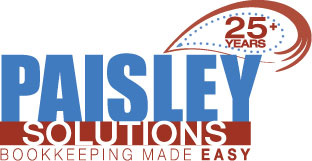Are your books ready for year-end?
As we approach the end of the year, it’s time to start getting those files ready for your accountant. Whether you do it yourself or have been wise enough to hire a bookkeeper, this checklist should help get your business books ready for end of year for your accountant…that’s why we put together a check-list of the most common accounting “to-dos” for the year-end.
✔︎ Review Your P&L
After you reconcile your bank accounts, receipts, and other potential concerns, take another look at your P&L.
✔︎ Collect W-9s
For every non-incorporated/sole proprietor that you’ve spent $600 or more with, you’re required by law to issue and complete a 1099 form. The 1099 must be filled out by January 31 and sent to the IRS by February 28 (or March 31 if you file electronically).
✔︎ Gather and Organize Your Receipts
The proverbial “shoebox of receipts” is NOT what your CPA wants to see. An easy way to organize your receipts is to use a software solution, which syncs with your credit card or bank account. That should help you account and categorize many of your expenses, which helps you reconcile your paper receipts. Be sure to copy down your thermal receipts because they have a tendency to fade too.
✔︎ Reconcile your bank accounts and credit cards
Make sure what you have in your financial statements matches up with your bank and credit card accounts and your year-end statements. If you are using online accounting software, it’s important your ledger balance matches as well.
✔︎ Verify Your Employees Information
Verify Employee Name
Verify Employee Address
Verify Employee Social Security Number
File W-2 (Gusto does this for you!)
It’s important to review employee data for the end of the year, particularly with employee names, addresses, and Social Security numbers. Improperly filing this could lead to penalties for each mis-filed W-2. Check with your employee to make sure that nothing has changed.
✔︎ Accounts Receivables and Invoices
Unpaid invoices can affect your accounting based on whether you are on a cash basis, or an accrual basis. Check with your bookkeeper or accountant to see what it means to the bottom line to write-off uncollected debt.
✔︎ Take Physical Inventory
✔︎ Look For Anomalies
Is something not adding up right? Be sure to point it out to your bookkeeper or accountant BEFORE the year is out.
If you find yourself unable to make sense of everything, and could use a little help, feel free to call (610-444-2597) or email us.
